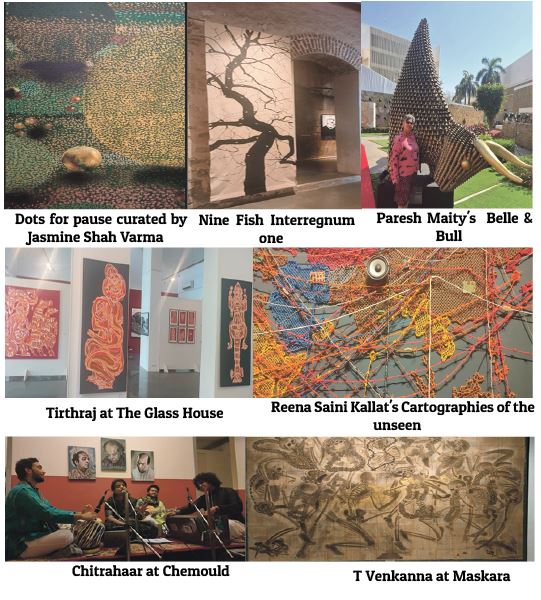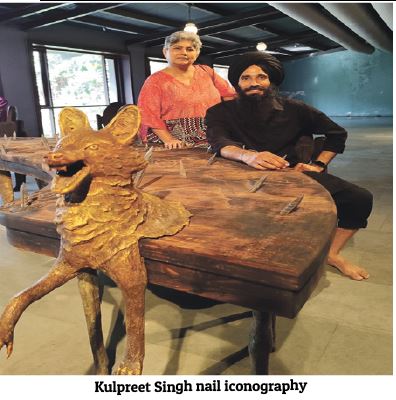I WAS swept back to the crackle of the waves of the radio. It is a recurring sensory in my memory. The morning ritual of my father was to fine-tune reception to his favourite R Ceylon on his huge radio with gigantic knobs. This station was the outcome of the AIR director banning the airing of film songs and only classical music was permitted post-independence in India. This gap was filled by R Ceylon who relayed Hindi film music and Western pop through the American transmitter from the pre-independence times The selection was hugely popular besides being it was the only option for entertainment and world updates through BBC.
All we heard was radio
MY dad cheerily got set for the day with this connection to the outside world and his beloved cricket commentary, much before Doordarshan made its appearance in the 70s. This was when the TV cast its spell on us. The limited programs became our fodder, besides the Marathi and Hindi news we hungrily feasted on the movie song clips of Chaaya Geet on Thursday and lapped up films in Black and White (vernacular languages on Saturday and Hindi on Sunday). The characters with nasal intonation and dreamy songs become part of us. This was the time when Manoranjan was melodious and the playback singers were emulated in ‘Antakshiri’. I marveled at my friend, Jaya, who studied with the radio on and finished way before me. The box at its highest decibel made the magic happen and kept us riveted to an era of music, the golden era.
Melodies to Match Portraiture
ATUL Dodiya’s solo, ‘Radio Ceylon paintings’, portraiture ‘Mehfil’ at Chemould was brought to life with Chitrahaar. Rutuja Lad and her musicians selected a repertoire of Bollywood classic melodies from the 40s to the mid-60s, a departure from her rendition of classical vocals. His mastery of portraiture met the inspiration as classics wed in harmony. She was accompanied by Tanay Rege on the tabla, Omkar Agnihotri on the harmonium and Abhishek Prabhu on the acoustic guitar.
Among the portraits of prominent Goan influences on Hindi film music was Chic Chocolate as part of three portraits in the exhibition. The music and portraits came back during the pandemic lockdown in 2020, where his movie buff family background came back to roost and root his close to a century of portraits, some like Ameen Sayani not on display. Perhaps this will be in Vol 2.
Multidiscipline Magic
I BELIEVE the confluence of multidisciplines yields exceptional outcomes. This was a conversation I had with artist Abhishek Singh. I love his harmony with nature and in particular, his elephants with branches sprouting out of their ears. I refer to the magnificent previous evening of the inaugural India International Music Week 2025 showcasing Talvin Singh and said his sketches would go so well. Out came his diary with a magnificent black and white back inner double spread of the majesty that performance held. He had captured the breathtaking vatavaram as it unfolded.

Art Cul-de-Sac
THIS Art Night Thursday (ANT) gave me the reason I needed to catch up with the multimedia apre preview. ‘The Toothless Times’ by Sarban Chowdhury is an interesting multimedia glimpse of the young artist’s thoughts. Sarban has a unique process that he uses for his ceramic artworks. I stopped at Sakshi’s ‘Dots for a Pause’, a curation by Jasmine Shah Varma over two levels. I love the light streaming during the day and hope I can resist.
Next door at Maskara was TR Venkanna’s ‘Black Blue Yellow’ in his inimitable stamp of carnal expression. While his mastery of technique is established, it’s an open frame of age-old societal discomfort that is dealt with. It’s either a cosmopolitan city of live and let live we are in or we have evolved maturing audiences that lets the show go on.
Langar
AFTER a quiet ANT, a Sunday that sets you reflecting. I head to the pond gallery at Nine Fish, Byculla for Kulpreet Singh’s ‘Langar.’ There is something special about the taste of the food offered. You can pin it down to the generosity of spirit and the solidarity of nourishing the farmers as they marched to the capital. You surrender to the smokiness of the kali daal, the huge dollop of ghee ghud to be savoured with the rustic ancient grain — the superfood kodra now marginalized post the advent of the green revolution and make-di-roti with sarson-da-saag, relishing the act of equanimous service by the host as we sat with those who prepared the meal. We indulged in rice kheer and sweet saffron rice in dried leaf cups while catching up with the artist and the gallerists Steinrukke and Ranjona Mirchandani. As we gazed at the geese swimming in the unlikely backdrop of a slice of erstwhile Bombay, time stood still.
I have viewed both Kulpreet Singh’s hard-hitting ‘Indelible Black Marks’ and the current ‘Fossils of Force’ that uses art to relay insights into the struggle of the farmers. The agrarian reality is laid bare with the use of the iconography of nails to connect the exhibitions. The two are a memorial for the 738 farmers who lost their lives in the farmers’ movement fighting for our collective future, and a site for langar (the communal feast from Sikh tradition). It makes the taste of the repast even more meaningful. To partake of the toil of those who feed us in spirit and body brings to the fore the respect that we owe the soil and hands that choose to feed us despite all odds.
On till March 6, 2025
Byculla Circuit
NINE Fish curations are put together using its vintage look to effect. I missed the preview of ‘Interregnum One’ curated by Anurag Kanoria with multiple artists in multimedia so used this opportunity to pop in. The space is inclusive and it is a must-recharge spot for HeArt and Soul. Likewise, The Glass House next to it holds Tirthraj’s distinctive line compositions of his subject of traditions rendered in vibrant red and ochre.
The next stop had to be Dr Bhau Daji Lad, BDL. It’s a visit pending since the museum was restored. Reena Kallats’s ‘Cartographies of the Unseen’, a solo survey greets you at the entrance of the green-gold and red ornate space. The indigo silk drapes hang down from bamboo scrolls. You see the constitution of many countries written out in white bandni buttis and likewise in braille which makes me wonder if it is tactile and accessible enough to be read by the visually impaired.
Saini Kallat’s practice as the curatorial note by the museum director, Tasneem Mehta, says “reflects a deep engagement with themes of injustice and man’s hubris, which is evident in the ways we interact and care for each other, and for the planet. Advocating for a renewed awareness of the interconnections that sustain life on earth, her work is a poetic plea for a kinder, gentler, and more equitable world.”
I have seen some of Reena’s huge format installations at Chemould with barbed wires strung in patterns or hung in bunches to depict cartographies. I also distinctly remember her madder textile drapes in the BDL project space in a multi-artist project space in 2018 with an evocative theme of justice.
You will have to look for the entire exhibition scattered across the corners, multilevel, and project space of the museum. It’s a composite of her works through the years including a terracotta installation in the K Bajaj room there which can be viewed in parts or a composite whole.
As I viewed the netted maps of the world, it took me to the work of El Anatsui who would turn an octogenarian this month. The Ghanaian sculptor flattened the metal bottle covers from the backyard of the factory in Nigeria for his gigantic installations that are symbolic of the world we live in.
On till April 6
Oorja
AND A final dash to Kotachiwadi to catch up with 47A. Jenny Pinto’s Oorjaa. The space is transformed into a fairyland of shapes that pay homage to nature and sustainable practices from end to end. Be it the totems or the various artfully rendered light shades, this is a simply spectacular outcome of using eco-friendly materials.
In All Fair Artness
I TRIED several permutations of the words art of India fair/festival search and discovered a boom on the net stretching from Nehru Planetarium to Delhi. I am looking forward to the new format of the India Art Fair by Jaya Asokan, which scheduled its inaugural edition in November at Jio World Garden, BKC (yes closer home yet so far) in the cultural capital of the country — Bombay. The domain has seen a spurt over the last couple of years driving its abundance. That’s good news for all of us. For now The art of India at NCPA beckons with Alka Pande as the force behind it. The exhibition focuses on folklore and the rich diversity of art in India.
I bumped into dear Sujata Bajaj, who is prepping for her upcoming exhibition at Art & Soul, while visiting Arzan’s exhibition ‘Suspended Animation’ on view till February 28. More about this later as I catch up with his artworks through time, the tactile chessboard of two cities, and the playful elephant sculptures I have grown to love. Wishing you all an animated weekend of artness too.
